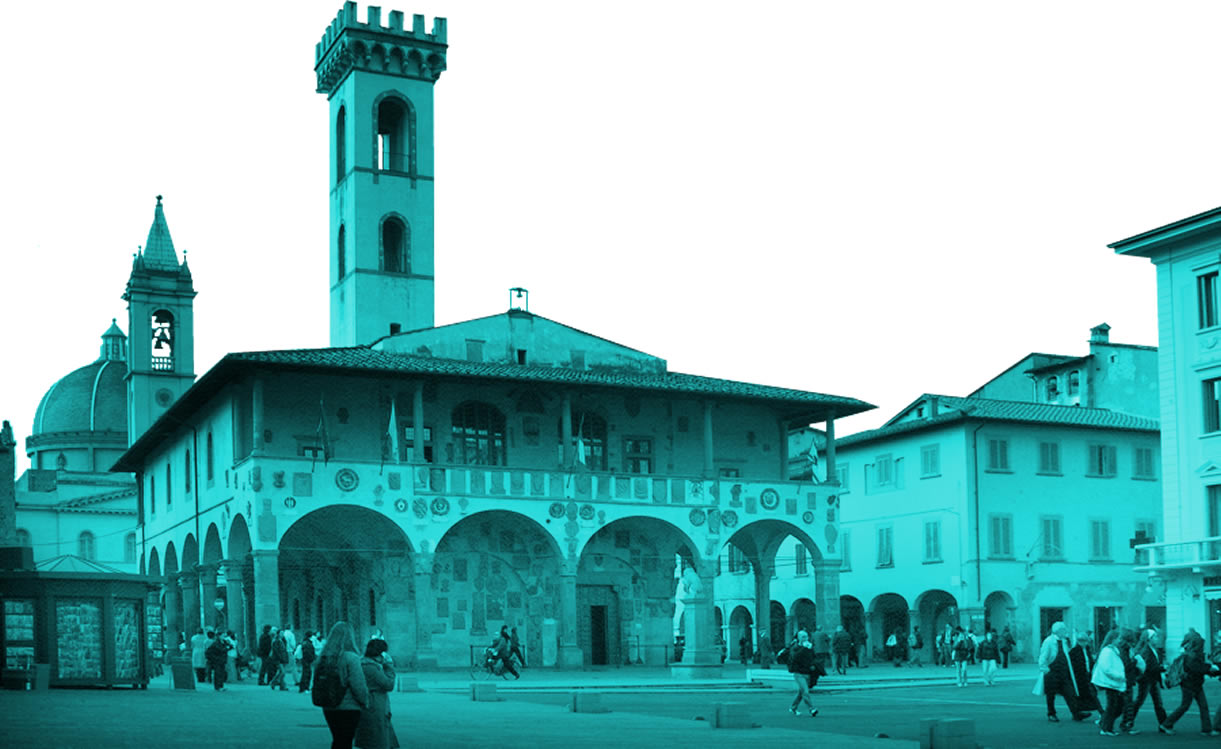The Upper Valdarno hasn’t still stably included in the field of the Florentine countryside between the end of the thirteenth and the beginning of the fourteenth century. Florence decides, for this purpose, to consolidate its own control on the valley through a system of military defenses. The decision to found San Giovanni is dated back to 1296.
The population of Castel San Giovanni flows from small towns and castles of the surroundings already possess powerful local landowners. The works of fortification are carried out with a slowness that exposes the city to external attacks. The frequent attacks weaken the uncompleted defensive structures of San Giovanni that resulted in terrible conditions in 1352.
To the period of ceaseless fights follows a twenty years period of relative stillness and development of the centre between the end of the fourteenth and the beginning of the fifteenth century. The Praetorian Palace, that was venue of the single mayor of San Giovanni in 1401, welcomes the Vicars of the Upper Valdarno at the beginning of the fifteenth century. In the sixteenth century the city progressively loses its original character of outpost, missing the military function of the Valdarnese centre after the instauration of a stable balance of forces in the Florentine countryside. The recovery of the centre (a demographic recovery as well) can be registered from the Lorraine period.
The reforms of Pietro Leopoldo tend to attribute administrative autonomy to the local communities and sign the end of Vicariates and Podestas between 1772 and 1774. An intensification of the policy of investments in favor of the countryside has been registered in the Lorraine period. The interventions of regulation of waters increase the possibility of exploitation of cultivable grounds.

1296, The foundation
The department of the Arno river
Under the Napoleonic government San Giovanni is assigned to the department of the Arno river. Vicariates and Podestas are abolished in 1848 because of the removal of the antique function of political control on the countryside, following the consolidation of the Medicean State, and reduced by the administrative Lorraine reforms only to judicial competence. San Giovanni loses the territory of Cavriglia, that became an independent municipality, and in 1848 it became part of the province of Arezzo.
The economic development and demographic growth determine a radical transformation of social orders of the Valdarnese centre at the beginning of the twentieth century. A factory’s lower class, very active on the political scene, it’s growing up numerically and for political and trade union initiative. Mutualistic, cooperative, welfare and cultural organizations created by workforce in response to the lacks of the current social legislation briefly see a remarkable development. .
World War seriously damaged the production facilities of the city. The immediate postwar period is featured by a rapid economic recovery of the centre and by a substantial demographic increase. The city extends itself exploiting free areas mostly along the right bank of the river and occupying the areas beyond the bridge over the Arno. The new general regulator plan was approved in 1972. The recovery of the strongly deteriorated historical center started by the end of the 70s. This involves a radical and systematic restoration of the residential units in obedience to homogeneous criteria of intervention, in order to revitalize the historical centre but keeping the old inhabitants.
In January 1977 was approved the first urban plan of the historical centre of San Giovanni Valdarno, with strongly innovative characteristics in forms and procedures for implementation. In the recovery plan the historical centre was assumed as a single entity that has to be protected from the urban, social, economic and cultural point of view. The new millennium brings the reconstruction of the two main squares, Cavour and Masaccio, in order to offer the current overview to the city.


